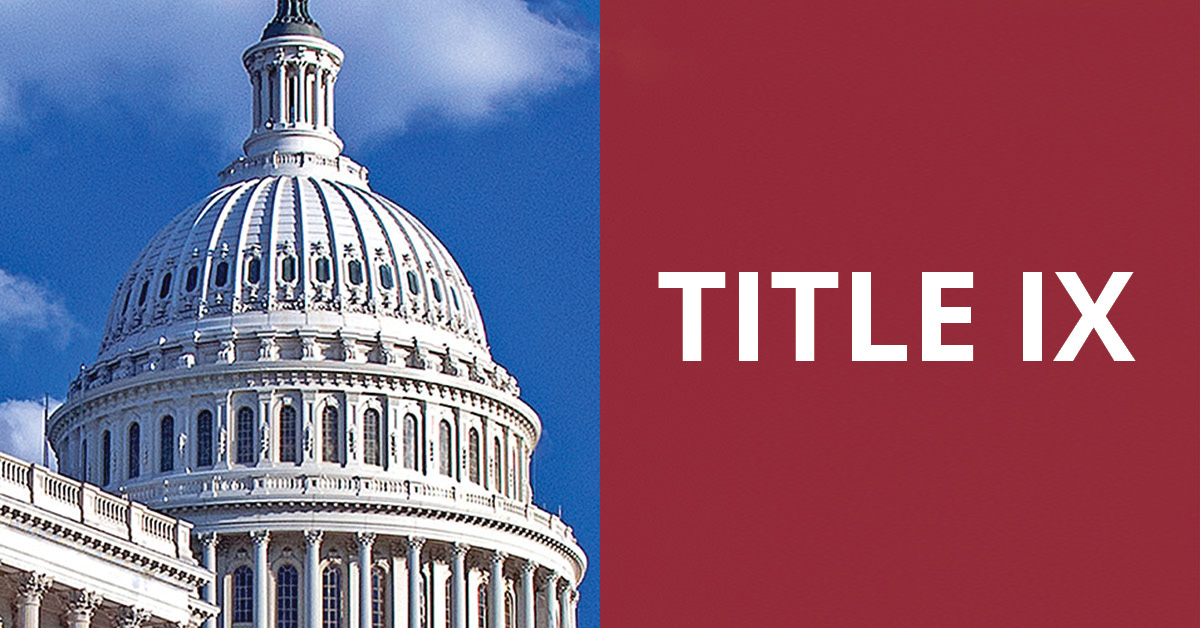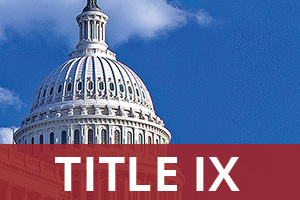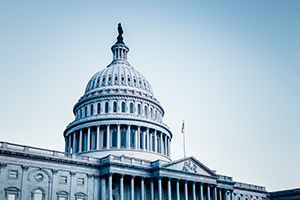Updated at 6:30 p.m. Jan. 9
A years-long effort to change how colleges respond to reports of sexual harassment and discrimination and to expand protections for transgender students is dead after a federal judge ruled Thursday that the Biden administration’s overhaul of Title IX of the Education Amendments of 1972 was unlawful.
The court order vacates the rule nationwide and could create more confusion for colleges as they seek to move forward without running afoul of the federal gender equity law. The Title IX changes were already on hold in 26 states and at hundreds of colleges, thanks to a series of lawsuits from 26 Republican attorneys general. Thursday’s order is the first final ruling in those cases and was part of a lawsuit brought by Indiana, Kentucky, Ohio, Tennessee, Virginia and West Virginia.
Republican lawmakers and state officials celebrated the ruling as a victory for women and girls while advocates for LGBTQ+ students criticized the decision as an attack on transgender students. The Biden rule allowed students to use the bathrooms and locker rooms that align with their gender identity.
Chief Judge Danny Reeves of the U.S. District Court for the Eastern District of Kentucky, who previously criticized the rule, wrote in a 15-page opinion that the regulations suffer “significant constitutional infirmities.” For instance, using the wrong pronouns for a student could be considered harassment under the rule. That provision “offends the First Amendment,” wrote Reeves, a George W. Bush appointee.
“As expected, courts have continued to find it impossible to justify the Biden administration’s changes to Title IX rules eviscerating students’ speech and due process rights,” said Tyler Coward, lead counsel for government affairs at the Foundation for Individual Rights and Expression, a free speech and civil liberties advocacy organization.
The ruling is the latest legal setback for Biden’s higher ed agenda, which hasn’t fared well in federal court.
‘Back in Time’
Colleges and universities will now revert to the previous Title IX rule, which took effect in summer 2020 during the first Trump administration. Those regulations required colleges to hold live hearings with an opportunity for cross-examination to allow those accused of sexual misconduct to confront their accusers—a provision the Biden rules nixed. Additionally, the 2020 regulations defined sexual harassment more narrowly than the Biden Title IX rule.
“Fitting, I guess—everything’s going back in time four years,” said Brigid Harrington, a higher education attorney at Bowditch & Dewey who focuses on compliance with civil rights laws. “Schools that had been enjoined were already there, so it doesn’t change things for many.”
Colleges don’t have to throw out all their new policies related to harassment and discrimination; they can keep the parts that don’t conflict with the 2020 rule. For example, under the 2024 regulations, colleges must give pregnant students notice of their rights, and the 2020 rule doesn’t prevent a college from doing so. (Reeves didn’t take issue with the pregnancy provisions but said, “It simply is not proper for the court to rewrite the regulations by excising the offending material.”)
Thursday’s ruling wasn’t a complete surprise for colleges and universities, considering the injunction and upcoming change in administrations. Andrea Stagg, director of consulting services at Grand River Solutions, a company that works with colleges on Title IX and other issues, said that colleges already have started talking about what to change in their policies and what to keep.
Still, reimplementing the 2020 regulations will mean retraining and re-educating students, staff and faculty about the changes.
“It’s very complicated, expensive and exhausting … and folks don’t have the resources,” she said. “For a field that already experiences a ton of burnout … it’s demoralizing to work so hard and then have the rules change on you.”
Several other lawsuits challenging the rule are still pending, and the Biden administration could appeal the decision to the U.S. Court of Appeals for the Sixth Circuit, so Thursday’s decision may not be the end of the legal battle over Title IX. The Education Department could not be reached for comment Thursday because the offices were closed in commemoration of former president Jimmy Carter’s passing.
“I don’t think this is the last that we’re going to hear of this,” said Harrington. “I think that civil rights are going to be a big topic for the next four years.”
A Repudiation or an Attack?
Republican attorneys general who sued the Biden administration and conservative advocates who criticized the rule celebrated the judge’s decision “as a massive win” and a sign that “common sense is slowly returning.”
“The court’s ruling is yet another repudiation of the Biden administration’s relentless push to impose a radical gender ideology through unconstitutional and illegal rulemaking,” Tennessee attorney general Jonathan Skrmetti said in a statement. “Because the Biden rule is vacated altogether, President Trump will be free to take a fresh look at our Title IX regulations when he returns to office [Jan. 20].”
President-elect Donald Trump has criticized Biden’s Title IX changes, and many experts expect him to issue new regulations that are more conservative than his 2020 rule, especially concerning LGBTQ+ students.
Congressional Republicans, who sought to overturn the Title IX rule, also praised the ruling and pledged to protect educational opportunities for women and girls. Passing legislation that would prevent transgender students from participating on the sports team consistent with their gender identity is a top priority for the House.
“It is clear the Biden-Harris administration completely lost its way on Title IX,” said Louisiana senator Dr. Bill Cassidy, the chair of the HELP committee, in a news release. “They betrayed the original intent of Title IX by removing longstanding protections that ensured fairness for women and girls.”
Representative Tim Walberg, the Michigan Republican who chairs the House Committee on Education and the Workforce, said that Biden’s proposed rewrite “would have undermined safety, freedom and fairness for women.”
Meanwhile, advocates for LGBTQ+ students and those who experience harassment or sexual violence described the ruling as an attack on trans students and others that would impact their educations.
“With these protections already removed in some states, students who experience sexual assault have had their complaints dismissed, or worse, been punished by their schools after reporting; pregnant students have been unfairly penalized for taking time off to give birth to a child; and LGBTQI+ students have faced vicious bullying and harassment just for being who they are,” said Fatima Goss Graves, president and CEO of the National Women’s Law Center.
Tracey Vitchers, executive director of It’s On Us, a national organization working to combat campus sexual assault, took issue with claims that overturning the Biden rule would protect women and girls.
“The 2020 regulations did well-documented harm to the safety of women and girls by making it more difficult to report and obtain justice if they experience sexual violence in school,” she said. “If preserving the rights and safety of women and girls was the actual litmus test for today’s decision, the judge would have chosen to uphold Biden’s rule. Instead, the safety of women and girls is being weaponized to discriminate” against trans people.
Vitchers added that while Title IX is important, colleges are required under state and federal laws to respond to reports of harassment and address student safety.
“Institutions are going to have to find ways to be creative to uphold the rights and safety of students on their campus under this new environment,” she said. “If Title IX is going to continue to be this horrible political football it has turned into, we need to see schools invest in evidence-based approaches to sexual violence prevention, because the ultimate goal is to ensure students have an education free of sexual violence.”
Jessica Blake contributed to this report.





